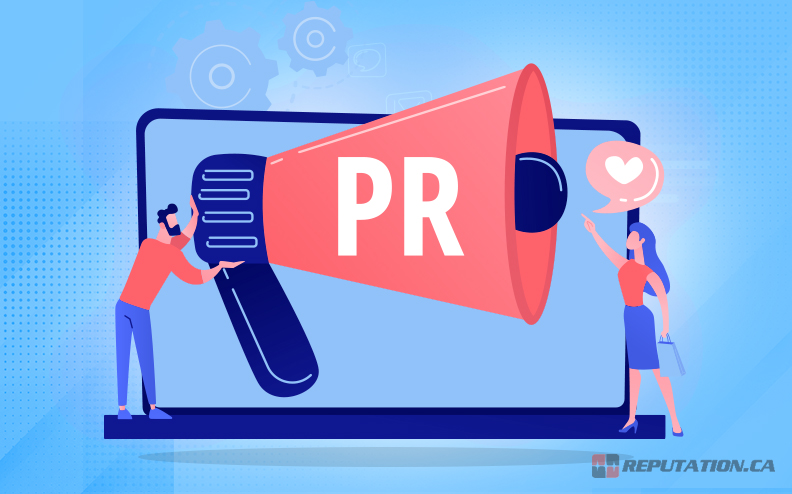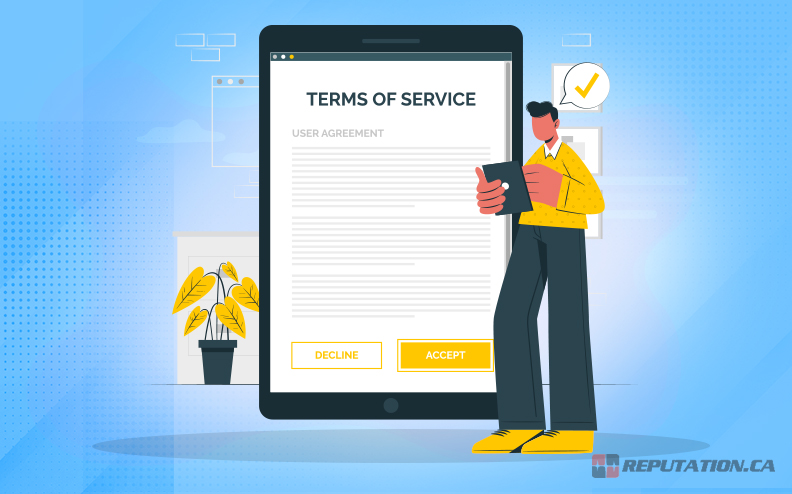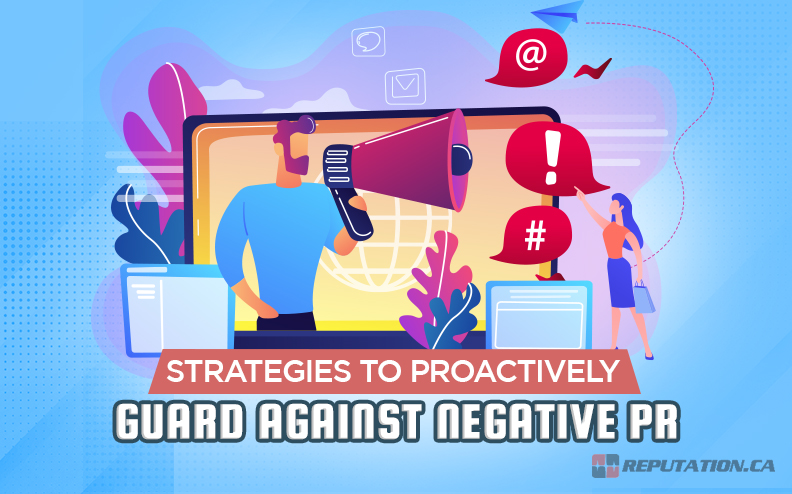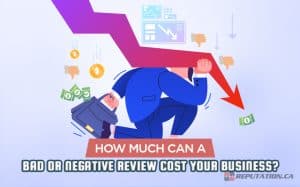Ever felt like you’re in the eye of a storm, with negative news swirling around your business? That’s when it hits: You’ve got to mitigate negative PR. But where do you start?
You might think it’s as simple as tossing out an apology or firing off a press release. If only! Navigating this PR nightmare needs strategy, authenticity, and speed.
Monitoring conversations and identifying threats early can save your reputation from taking a hit.
Intrigued? Good! Because what follows will arm you with practical tips on managing negative PR effectively while maintaining credibility and trust. We’ll explore everything from the importance of leadership during crisis management to legal considerations when dealing with potential pitfalls.
What lies ahead is a mystery full of opportunities and challenges. Let’s bravely face them together.
The Importance of Being Proactive
Being proactive in managing PR is like a chess player anticipating the opponent’s moves. It can help prevent negative PR incidents from even starting, let alone escalating.
Negative PR can take various forms, including bad press, poor reviews, and negative comments on social channels. Like an unexpected rainstorm during your picnic, they could spoil your day if you’re not prepared with an umbrella – or, in this case – a solid crisis management plan.

So, what does being proactive look like? Think about it as building a strong fort before the enemy attacks. You need to have plans ready for deployment in an instant so you’re not desperately searching for solutions when problems arise.
The Role of Leadership in Crisis Management
When trouble brews up within your brand’s horizon line – such as negative news threatening to dent your image or affect the bottom line – who steps forward? The CEO or MD should be the frontline spokesperson because they are seen as trusted figures who represent company values and integrity.
An effective leader doesn’t wait for bad news but anticipates potential issues beforehand. They mitigate negative PR by acting swiftly and decisively instead of waiting for circumstances to dictate their actions—much like how firemen would rather prevent fires than put them out.

This level of readiness also includes understanding how any action might impact the stock price or customer sentiment around new product releases (like car manufacturers planning ad campaigns). By handling potentially damaging situations early on – whether it’s through media interviews addressing sensitive topics head-on or swiftly rectifying service lapses noticed by vigilant wait staff at their pizza shop outlets — companies show customers that they’re not just reactive but proactive in their approach.
Remember, a PR nightmare can spread faster than wildfire. But with proactive measures and effective leadership steering the ship during a crisis situation, it’s possible to turn potentially damaging publicity into an opportunity for demonstrating resilience and commitment to stakeholders.
Examples of Proactive PR Strategies
Handling negative publicity is not just about reacting to the crisis. Instead, it’s more effective to prevent the issues before they blow up.

This can be achieved by employing proactive strategies that help mitigate potential threats early on.
Social media platforms are a double-edged sword. They give brands unprecedented access to their audience but also make them vulnerable to criticism and bad press.

To turn this into an advantage, companies need clear social media guidelines. These rules guide employees’ online behavior, helping maintain a positive image while avoiding any unnecessary controversies.
Audience Engagement through Regular Monitoring
The importance of regular monitoring cannot be overstated when it comes to averting negative PR situations. Keeping tabs on your brand mentions across different channels helps you identify potential problems in real time.

This way, you get ahead of possible crises and control narratives around your brand effectively — making sure no false information tarnishes your reputation or impacts your bottom line negatively.
Crisis Communication Plan
Having a solid crisis communication plan is crucial. Such plans detail steps required for addressing various types of crises – from social media blunders to severe cases like product recalls or legal issues – with agility and transparency.

They can share the next steps immediately after an incident occurs, preventing further escalation and stopping damaging rumors in their tracks—keeping audiences informed and involved rather than leaving them speculating.
Finding Value in Media Training
Media training is a key aspect of any proactive PR strategy. It equips company spokespersons with the necessary skills to handle interviews and press conferences confidently.

This helps ensure that they can steer conversations in a positive direction, address negative comments effectively, and present your brand in a favorable light even during challenging times.
Recognize Potential PR Threats
Recognizing potential threats that could turn into a full-blown PR crisis is vital for any business.

This process involves closely monitoring your brand’s public perception, the impact of your advertising campaigns, and how well you follow ethical business practices.
Advertising Campaigns
A major part of keeping your organization’s notoriety in good standing is having the option to recognize likely issues with ad efforts before they get out of hand. Remember, what seems like an innovative ad campaign can sometimes be seen as controversial or offensive by others.

The recent controversies surrounding big companies such as Victoria’s Secret and Taco Bell are classic examples. These brands faced significant backlash due to poorly executed ad campaigns that were perceived negatively by the public. By paying close attention to feedback during the initial testing stages, these PR disasters may have been avoided.
Ethical Business Practices: A Shield Against Negative Reviews
Maintaining ethical business practices not only fosters trust among customers but also serves as a shield against negative reviews – another major source of negative publicity. Bad press related to unethical actions can cause long-term damage and erode customer loyalty fast.

To illustrate this point further, consider the fallout from Volkswagen’s emission scandal or Wells Fargo’s account fraud debacle—these instances led their respective stock prices to plummet overnight because they violated established ethical standards.
Closely Monitor Your Brand Image
Last but certainly not least is constant vigilance over your brand image on social media platforms, where negative comments can spread like wildfire if left unaddressed promptly. Customers often use these channels to voice complaints or concerns about products or services; thus, it becomes necessary for businesses today more than ever to keep a close eye on these platforms.

Whether it’s the handling of negative reviews, controversial ad campaigns, or maintaining ethical business practices – being proactive in recognizing potential PR threats is an integral part of managing your brand’s reputation. This helps not only in mitigating immediate fallout but also aids in building long-term customer trust and loyalty—a must for any successful business.
The Benefits of Having a Crisis Response Partner
When the tide turns and negative PR storms roll in, having a crisis response partner is like owning an all-weather coat. This partner or team becomes your brand’s first line of defense against bad PR that could hurt your bottom line.
A dedicated crisis plan tailored by experts can steer you away from impending dangers. It allows you to respond quickly, thus containing any potential fallout effectively. Emotions play a significant role, too – managing them well ensures clear thinking and rational decision-making processes amidst chaos.

One vital aspect these professionals emphasize is accountability coupled with future action plans—both critical elements when addressing stakeholders during turbulent times. They work tirelessly behind the scenes to protect the reputation that took years for you to build.
Crisis response partners also double up as brand ambassadors during tumultuous periods—a role they embrace with utmost professionalism. These teams have expert communicators who understand how crucial it is to relay information responsibly while under pressure, making sure facts are accurate before sharing them publicly.
In essence, having such seasoned navigators at hand not only helps mitigate adverse effects but also contributes positively towards restoring faith amongst consumers post-crisis period—an integral part of long-term business sustainability.
Legal Considerations
Navigating the legal landscape when managing negative PR is no walk in the park. It’s more like a trek through uncharted territory where one misstep can lead to public opinion turning against you.

The first step? Understanding and sticking to terms of service on all platforms your business uses. This not only protects you legally but also shows respect for users’ rights and fosters trust with them.
Understanding Terms of Service in Negative PR Situations
Every platform has its own set of rules – their ‘terms of service.’ Think about these as house rules when visiting someone else’s home; they may vary from place to place, but it’s crucial that we adhere to them.
This becomes especially important during times of crisis or bad publicity because failing to abide by these regulations can add fuel to an already raging fire. It would be best to study what actions are allowed under each platform’s terms before making any response.

An effective way businesses mitigate potential legal issues is by ensuring their responses don’t infringe upon anyone’s privacy or breach confidentiality agreements. Accidentally sharing private information could exacerbate a PR nightmare into a lawsuit, which nobody wants.
Besides this, knowing how far your company can go in defending itself online without crossing defamation lines helps maintain credibility while addressing concerns raised publicly.
Maintaining Ethical Standards
In addition to understanding digital laws and guidelines surrounding social media usage, adhering strictly to ethical standards forms another vital part of handling potential negative press situations responsibly.

A reputation built over years could be ruined within seconds if questionable tactics are used while dealing with critics. Transparency should be at the forefront of any response strategy. It not only showcases your brand’s integrity but also helps maintain public trust in your business.
Professional Legal Help
If things start getting a little too hot to handle, don’t hesitate to bring in professional help. Lawyers experienced in handling defamation or libel cases can guide you through responding appropriately and prevent matters from escalating further.

While the legal aspects of PR management might initially appear overwhelming, understanding them is crucial. It is essential to be aware and equipped to tackle any eventuality that might come up. Remember, a solid grasp of these elements can truly set you apart in this field.
How to Effectively Manage Negative PR
When it comes to negative PR, the key is swift and transparent management. You need a robust plan of action that emphasizes honesty, accountability, and future steps.

Let’s delve into this further.
Tackling Publicity Crises with Transparency and Accountability
In the face of bad press or a publicity crisis, being forthright can turn things around for your brand. If you’ve found yourself on the receiving end of negative PR—that’s double trouble—how you manage it will determine whether your reputation takes a permanent hit or if there’s room for recovery.
The first step? Accept responsibility where due. Remember Taco Bell when they were accused of using only 35% real beef? They didn’t hide behind corporate speak; instead, they launched an ad campaign stating ‘Thank You For Suing Us,’ which clearly communicated their stance while addressing allegations head-on.

You must also demonstrate how you intend to rectify any shortcomings leading to such situations in order not just to manage negative incidents but also to prevent them from recurring. Clear communication plans are essential here – remember transparency isn’t optional during a publicity crisis; it’s compulsory.
Acknowledging mistakes doesn’t mean dwelling on them forever, though. Make sure after initial communications about what went wrong have been made clear that the focus swiftly shifts towards outlining actionable solutions & better practices going forward.
Building Trust Post-Negative PR
Navigating the stormy seas of negative PR can be daunting, but it’s how you rebuild trust afterward that truly defines your business. A robust stakeholder communication plan is vital to mend fences and restore faith in your brand.

Let’s start by accepting responsibility. Acknowledging mistakes might seem like a risky move, but it sends a powerful message: You value transparency over deception. According to Marshall Communications, accountability is key to regaining lost credibility.
The Power of Regular Updates
A common misstep businesses make post-negative PR? Going radio silent. This approach often backfires because stakeholders feel left out and start losing trust rapidly.

To avoid this scenario, provide regular updates on corrective actions being taken. It doesn’t have to be an elaborate press release every time; even short social media posts or emails will suffice as long as they’re consistent and genuine. Regularly updating stakeholders has been shown to help rebuild trust significantly, according to various industry studies.
Maintaining Accessibility
In times of crisis, accessibility goes hand-in-hand with transparency for damage control efforts. The last thing you want is for customers or partners to feel neglected during such sensitive periods. This means being available for any questions or concerns from them—whether through social media platforms, email responses, or timely customer service interactions.

It shows you care about their sentiments and are willing to put forth the effort necessary to fix problems that may have arisen due to earlier incidents. You’d be surprised at how much goodwill simple gestures like these can generate.
Finding The Right Partner
Bouncing back from bad publicity isn’t easy. That’s where the expertise of a PR firm can come in handy. From crafting effective press releases to implementing strategic communication plans, they are equipped with the tools and knowledge necessary for damage control.

Remember, when it comes to mitigating negative PR, the goal isn’t just about ‘getting back to normal.’ It’s also an opportunity for growth and learning.
Take Your Reputation Back!
Staring down the barrel of a PR crisis isn’t easy. But with this guide, you now know how to mitigate negative PR. From being proactive in monitoring conversations and identifying threats early on to having effective leadership during crises.
You’ve learned about practical strategies. Crafting clear social media guidelines for positive engagement. Recognizing potential pitfalls in advertising campaigns. All while considering legal aspects and terms of service.
Tackling publicity crises with transparency and accountability is vital.
Your takeaway? Bad news can be turned into opportunities for growth if handled well.

At Reputation, we prioritize proactive reputation management and adept public relations strategies. We understand the profound impact a crisis can have on one’s image and are dedicated to pre-emptively addressing potential issues.
Our expertise extends to curating your social media content, creating and editing Wikipedia pages, monitoring and managing reviews, and ensuring all communications align with Canadian legal standards.
Should you find yourself navigating a challenging situation, please get in touch and reclaim your reputation with confidence!












